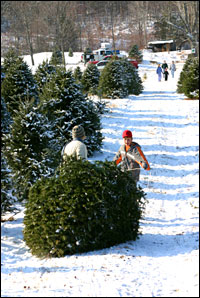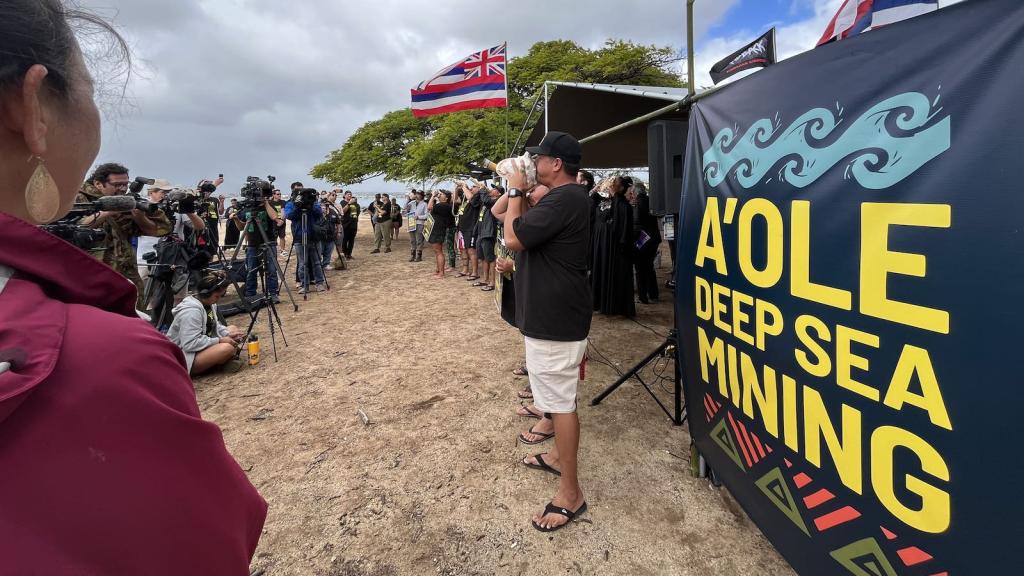Dear Umbra,
Is there such a thing as an organic Christmas tree? How chemical-intensive is conventional Christmas-tree farming? If I want a Christmas tree, what’s the most eco-friendly way to go?
Your fan,
Lisa
Seattle, Wash.
Dearest Lisa,
Since you are not only a fan but also my senior editor, who told me you are considering purchasing your own Christmas tree for the very first time this winter, the “Christmas spirit” has suddenly come upon me.

A whole lot of trees. But are they organic?
Photo: iStockphoto
Lisa, there is such a thing as an organic Christmas tree, and there are also Christmas-tree farms that use Integrated Pest Management (IPM). Most Christmas trees, however, are grown using conventional agricultural methods, and the growers regularly spray pesticides for various tree pests, and apply fertilizer to the plots. Why, why do they do this? It’s the way they were taught, it’s the way the industry works, and switching to organic involves a learning curve, potential product loss, and perhaps little financial reward if you can’t find the right market for your trees.
North Carolina Extension measured the amount of active pesticide ingredient applied per tree (1/4 oz. over the tree’s lifetime), while other sources point out the real damage organophosphates used on tree farms do to workers and the environment. IPM is a great system of pest management, and may be spreading as an industry practice, but it’s usually hard to know if the sidewalk tree sale includes IPM trees.
A few years back I examined the artificial vs. real tree question (that column contains tidbits I will not repeat here), and came down on the side of real trees. Most artificial trees are vinyl Chinese imports (No On Vinyl!), and quite a few contain lead. Christmas party conversation fodder: Christmas décor is apparently one of the largest categories of Chinese imports.
I offer two new pieces of information on the artificial-tree front: Readers joyfully taught me about vintage aluminum “trees.” You can get one of those, if you like, but it must be vintage. Virgin aluminum is not better than a renewable resource. Also, polyethylene plastic “trees” are available on the internet. Years ago a salesperson assured me polyethylene was the fake tree of the future, because the branches are molded into realistic shapes. However, I just looked to be sure they had not become trees of the past and found that inner branches of polyethylene trees may be made of PVC, to create “fullness.” That’s just as well — we should avoid these plastic doohickeys.
So, except for inherited or previously owned fake trees, Umbra prefers the real tree (the “no-tree” choice doesn’t count as a tree). Shockingly, the National Christmas Tree Association, a growers’ group, agrees with me. Feel free to read their biased side-by-side evaluation of fake vs. real trees. It’s hard to argue with, even if it is biased. After all, Christmas tree farms are tree plantations, and a harvested tree is replanted. There are various serious points to quibble about, such as pesticides, whether tree farms are sequestering significant carbon, and transport, but look at the other choice: petroleum trees made and shipped from Chinese factories.
How does one find an organic or locally grown tree? See how I slip “local” in there — I think a local, non-organic, non-IPM tree is preferable to a tree shipped to you from North Carolina or Oregon. In Seattle, check out the Puget Sound Fresh guide and look in it for Christmas tree growers. Many cities and towns now have publications such as this, which list places to find local products, U-Pick farms, markets, CSAs, and Christmas trees. Find the guides at the food co-op, natural grocery store, community bulletin board, or farmers’ markets. If your area does not have such an organization or publication, the internet is your last hope. Enjoy your tree, Lisa.
Noelly,
Umbra


